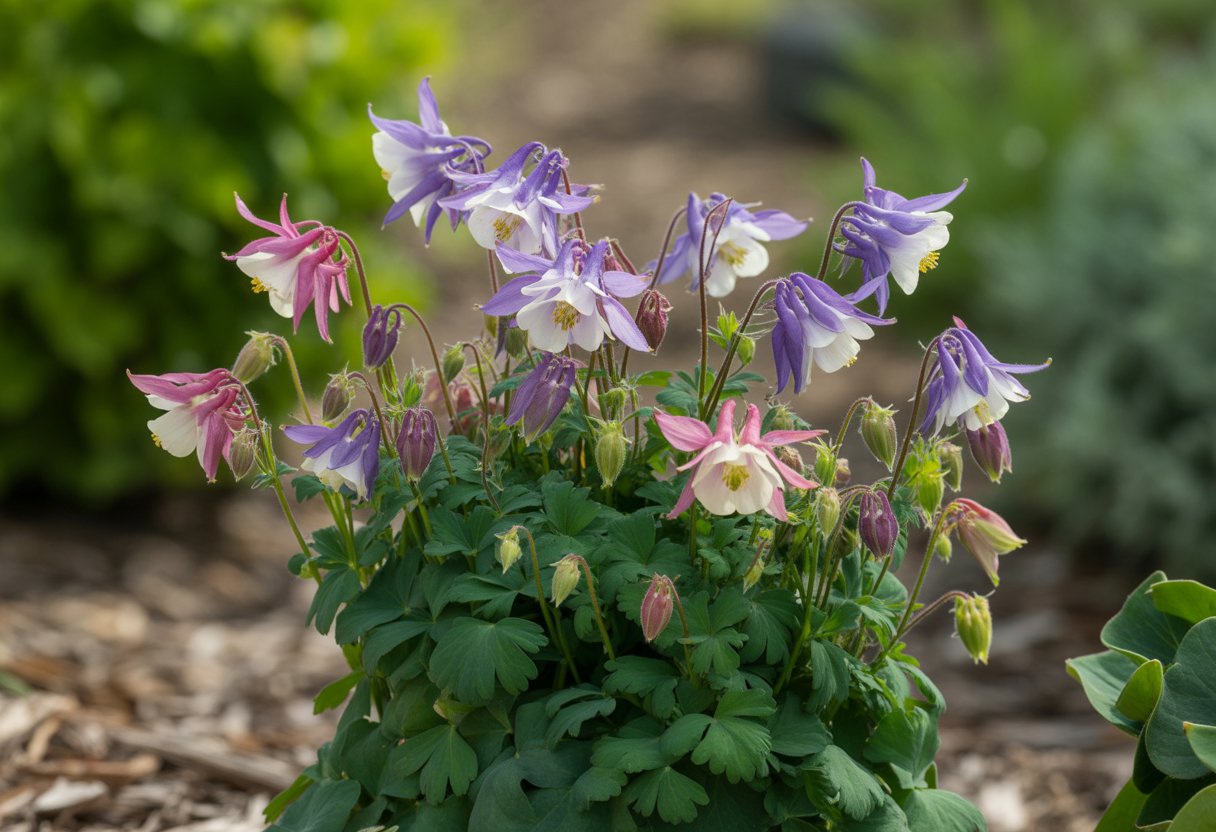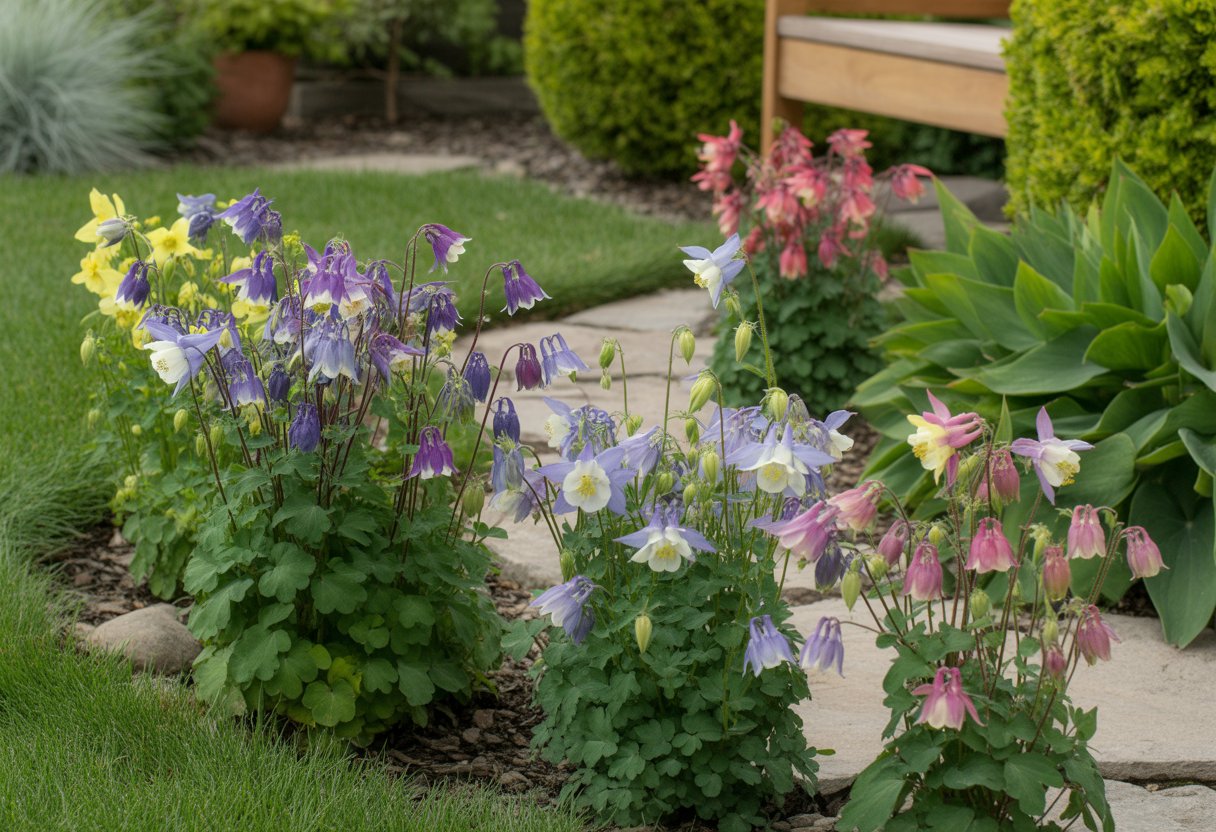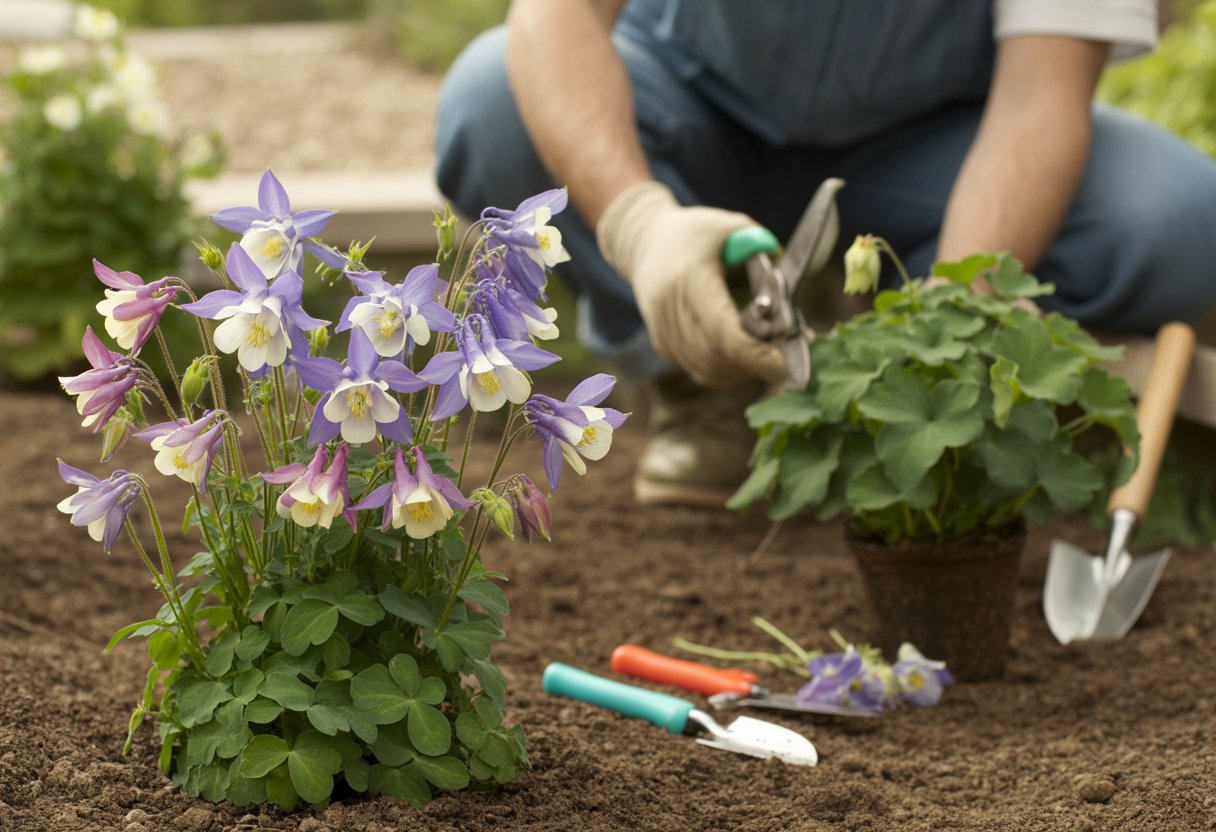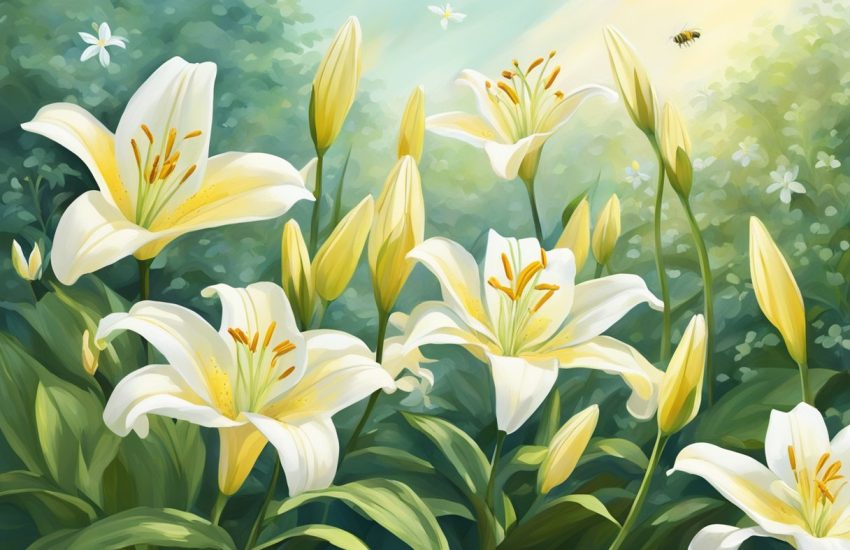Ornamental Columbine for Landscaping: Enhancing Garden Aesthetics with Color and Texture
Ornamental columbine brings a ton of charm to landscaping. Its unique, delicate flowers and adaptability make it a go-to for gardeners who want something both beautiful and practical.
You can plant it just about anywhere—shaded woodland corners, sunny borders, or tucked beside a stone path. It really fits a lot of garden styles.

The plant attracts pollinators like hummingbirds and bees, adding ecological value while enhancing garden beauty. It doesn’t demand much fuss and handles different soil types, so both new and seasoned gardeners can enjoy it.
Key Characteristics of Ornamental Columbine
Ornamental columbines really stand out thanks to their leaf shapes and unusual flower structures. They’re hardy perennials, and their colorful displays fit into all kinds of landscape designs.
Unique Foliage and Spurred Flowers
Columbine’s deeply lobed, fern-like foliage adds texture and contrast to garden beds. The leaves usually show off a bluish-green or gray-green color, which is a nice, subtle touch under the blooms.
The flowers steal the show—each one has elongated nectar spurs that stretch out behind the petals. Hummingbirds and bees love these spurs, since they hide sweet nectar inside.
Some species have longer or shorter spurs, but all create that delicate, star-like look.
Blooming Patterns and Nodding Flowers
Columbines bloom mostly from late spring into early summer. The flowers hang downward, which keeps pollen safe from rain and helps guide pollinators.
You’ll see flowers for several weeks, depending on the weather and how much care you give them. If you snip off the faded blooms, you’ll usually get an even longer show.
The way the flowers nod also adds some quirky visual interest—different angles, little highlights, and a bit of movement.
Popular Species: Aquilegia canadensis, Aquilegia vulgaris, and Aquilegia formosa
Aquilegia canadensis (Eastern Red Columbine) has bold red and yellow flowers with long spurs. It thrives in woodlands and rocky spots, and hummingbirds flock to it. This North American native is a tough perennial.
Aquilegia vulgaris pops up in European gardens. Its upright stems carry flowers in blue, purple, pink, or white. It handles temperate climates well and gets a lot of love for its color variety.
Aquilegia formosa puts out red and yellow nodding flowers similar to A. canadensis, but it’s a bit more adaptable. It grows well in moist areas and fits right into naturalistic gardens with its vibrant color and flexibility.
Planting and Growing Requirements
Columbine really shines when you give it the right spot and soil. Good placement, soil quality, and climate make all the difference if you want healthy plants and vibrant blooms.
Site Selection: Sunlight and Shade Preferences
Columbine prefers partial shade or dappled shade, especially where summers get hot. In cooler places, it can handle full sun, but it appreciates some afternoon shade to keep its leaves from burning.
If you give it too much direct sun, the plant can get stressed. Deep shade, though, means fewer flowers. A site with morning sun and afternoon shade usually works best.
It also does well under deciduous trees, where it gets filtered light.
Soil and Watering Needs
Columbine likes well-draining soil with plenty of organic matter. Heavy, packed soil can cause root rot and stunt growth.
Loamy or sandy soil mixed with compost holds moisture and nutrients better. Water regularly during dry spells, but don’t drown the roots.
Let the soil dry out a bit between waterings. A layer of mulch helps keep moisture in and weeds down.
Hardiness Zone and Climate Considerations
Columbine handles USDA zones 3-9, so it’s pretty adaptable. It can take cold winters and moderate heat, but extreme heat or humidity can be tough without enough shade.
A good mulch layer helps it survive harsh winters. Growth slows down in really hot weather, so shady spots and extra water can help during summer.
Design Ideas for Landscaping with Columbine

Columbine fits into all sorts of garden settings. Its delicate flowers and interesting foliage work well with stones, other plants, and even in containers.
It’s also a magnet for hummingbirds and butterflies.
Rock Gardens and Mixed Borders
Columbine thrives in rock gardens, where the well-drained soil and filtered sun mimic its wild roots. Its compact size and colorful flowers look great next to stones and succulents, softening those hard edges.
In mixed borders, it pairs up nicely with perennials like coneflowers and bee balm. Columbine adds a bit of height and fills those mid-season gaps between early and late bloomers.
Try planting it near the front or middle of borders for the best effect.
Containers and Wildflower Areas
Columbine works well in containers, too. You can control the soil and move the pot to just the right spot for sun or shade.
It’s happy in medium-sized pots and looks great with trailing plants like ivy or lobelia. That combo really makes container displays pop.
In wildflower gardens, columbine naturalizes easily in partial shade. It creates a lively, diverse plant mix. Since it self-seeds, you don’t need to do much for it to stick around, and it blends in well with native grasses and wildflowers.
Attracting Hummingbirds and Butterflies
Columbine flowers pump out nectar that hummingbirds and butterflies can’t resist. The tubular blooms and bright colors are especially attractive to hummers.
If you plant them in clusters, pollinators spot them more easily. Placing them near water or other nectar-rich plants can boost garden wildlife even more.
Deadheading spent blooms keeps the flowers coming and the pollinators happy.
Care, Maintenance, and Propagation

Columbine’s pretty easy to care for, but a little attention goes a long way. Deadheading, managing self-seeding, and the occasional dividing or fertilizing keep it looking good.
Propagation is straightforward and helps refresh your garden beds.
Deadheading and Dividing
Snip off faded columbine flowers with clean scissors or pruners to stop them from setting seed. This keeps the plant blooming longer.
You don’t have to divide columbine often, but it helps older, crowded clumps. Early spring or fall is the best time.
Lift the plant gently and separate the root clumps. Replant divisions right away to avoid too much transplant shock.
Self-Seeding and Germination
Columbine drops seeds readily, so you might spot seedlings popping up nearby. You can let them naturalize or gather seeds for sowing elsewhere.
Seeds need light to sprout, so scatter them on the soil surface or just barely cover them. They usually germinate in two to four weeks if it’s cool—somewhere around 50-65°F (10-18°C).
If you don’t want columbine spreading everywhere, remove seed pods early. For more control, sow seeds indoors six to eight weeks before the last frost, or plant them outside after frost danger passes.
Fertilizing and General Care Tips
Fertilize columbine once in early spring using a balanced, slow-release fertilizer like 10-10-10. This gives the plant nutrients for the whole growing season.
Try not to overdo it—too much fertilizer leads to lots of leaves but hardly any flowers. Water the plants regularly, but don’t let the soil get soggy.
Columbine really needs well-draining soil. Mulch around the base helps keep moisture in and weeds out.
In hotter places, give the plants some partial shade. That little bit of protection keeps the leaves healthier and can stretch out the bloom time.
Check your columbine now and then for pests like aphids or leaf miners. Catching problems early just makes life easier for your plants.

